Philips OLED 809 is a quite versatile television that appeals to a wide range of viewers. Its greatest distinguishing feature among all the television models on the market is the multicolour Ambilight backlighting. This often allows for an even greater immersion and engagement in the world of film. What is most important in televisions, namely contrast, black levels, and colour reproduction, is at a high level, and this is something that will always impress in OLED televisions. The tested television, although it performed quite well in our test, has some shortcomings worth noting. These include the quality of tonal transitions and the abrupt operation of the dynamic tone mapping function. In some cases, these may slightly irritate sensitive eyes. However, Philips OLED 809 excels in other respects, particularly in two areas: gaming performance and motion smoothing. The former stands out particularly strongly, as each of the implemented functions operates without the slightest hesitation, allowing for an even more immersive gaming experience. As for motion fluidity, it is at a similarly high level as the gaming support. Thanks to two sliders, whose effects are noticeable at each position, every user can find the best degree of smoothing for themselves. It’s also worth mentioning the Google TV system, which operates very smoothly and during the tests there were no "stutters".
- Matching (Score)
- Our verdict
- TV appearance
- Where to buy
- Contrast and black detail
- HDR effect quality
- Factory color reproduction
- Color reproduction after calibration
- Smoothness of tonal transitions
- Image scaling and smoothness of tonal transitions
- Blur and motion smoothness
- Console compatibility and gaming features
- Input lag
- Compatibility with PC
- Viewing angles
- TV efficiency during daytime
- Details about the matrix
- TV features
- Apps
- Playing files from USB
- Sound
Philips OLED809/819 vs SAMSUNG S90F (WOLED)
Direct compare
OLED809 / OLED819 / AMIBLIGHT TV
S90FAE

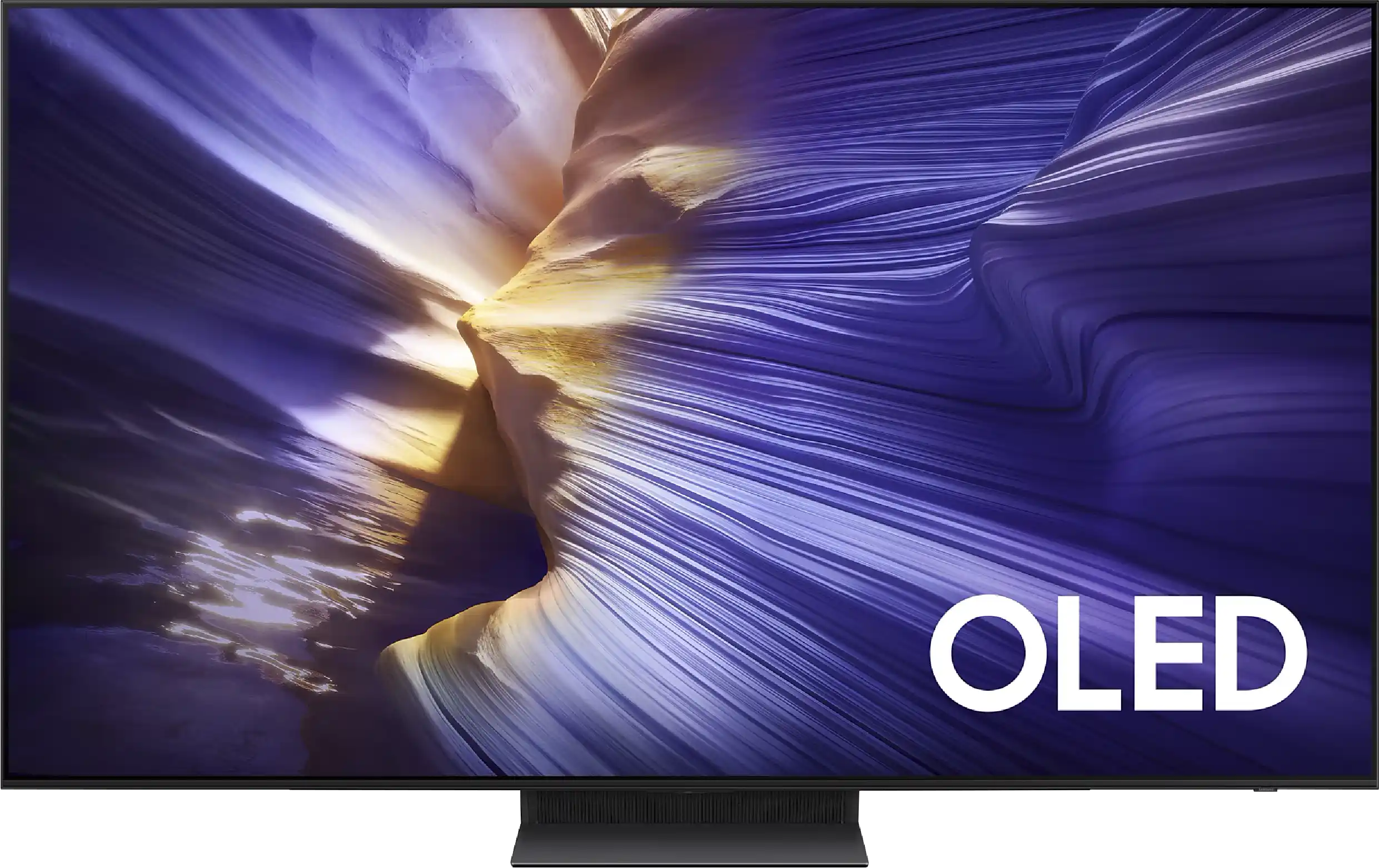
Panel type: WRGB OLED
Resolution: 3840x2160
System: Google TV
Model year: 2024
Complete the survey to find out the result

Panel type: WRGB OLED
Resolution: 3840x2160
System: Tizen
Model year: 2025
Complete the survey to find out the result

Overall rating
7.6
8.1
Movies and series in UHD quality
7.3
8.3
Classic TV, YouTube
7.8
8.7
Sports broadcasts (TV and apps)
8.2
8.5
Gaming on console
9.2
9.6
TV as a computer monitor
6.4
8.6
Watching in bright light
5.5
6.1
Utility functions
7.8
7.5
Apps
9.6
8.7
Sound quality
7.1
7.4
Complete the survey to find out what fits your preferences
Advantages
Advanced Google TV system with good app support
Very good cooperation with the console
Good image fluidity, and an advanced system for its improvement
Multicoloured Ambilight backlighting
Remarkable black and contrast
High brightness for an OLED TV - 1200 nits peak brightness
Very good motion fluidity - OLED panel 144Hz
Low latency - input lag 5ms
Gaming features: 4x HDMI 2.1, VRR, ALLM, Game Motion Plus, etc.
PiP function and excellent support for external devices with a solar remote
Extended operating system: Tizen
Pleasant sound with a slightly perceptible bass
Disadvantages
Poor factory colour rendering (can be fixed through calibration)
Strongly contrasting tonal transitions
Average readability of fonts when connected to a computer
Issues with playback of certain formats from USB.
Subtle blending of tonal transitions (performs worse than its predecessor S90D)
Lack of support for DTS:X – an external amplifier is required for full support of this format
Our verdict
The Samsung S90F is an excellent representative of the premium mid-range in the world of OLED televisions. Here we have an organic matrix that guarantees perfect contrast – and no matter how hard LCD manufacturers try with local dimming in Mini LEDs, this black simply cannot be replicated. The S90F showcases its class without any compromises. Compared to last year's model, we get a slightly brighter WOLED panel that, under favourable conditions, can achieve even 1200 nits. This is a result sufficient for comfortable viewing of HDR materials in reference quality for most scenes – especially on streaming platforms such as Netflix. The picture quality here is at a very high level, whether we're watching a film, gaming on a console, or streaming a sports event. In fact, versatility is one of the biggest advantages of this model. With a refresh rate of 144 Hz, very low input lag, and a full set of features for gamers (including working HGiG and the unique Game Motion Plus smoothing), it’s hard to find fault with anything here. The Tizen system performed really well on the S90F. It has its limitations – primarily a closed ecosystem and fewer app options than on Google TV – but if you mainly use the most popular services, this shouldn’t be an issue. A big plus is also the remote control, which can operate most connected devices – even without a numeric keypad. There are also downsides. The built-in media player occasionally has issues with certain formats, and the anti-reflective coating typical of WOLEDs does not handle strong light very well – reflections can be noticeable. We also lack support for DTS and Dolby Vision, but this has been the standard at Samsung that one could expect for years. So is the S90F with a WOLED panel the perfect television? No – but it really isn't missing much. It’s one of the most refined and complete OLEDs in this price range, capable of handling any content, from a series on Netflix, through gaming on a console, to a Sunday match.
TV appearance



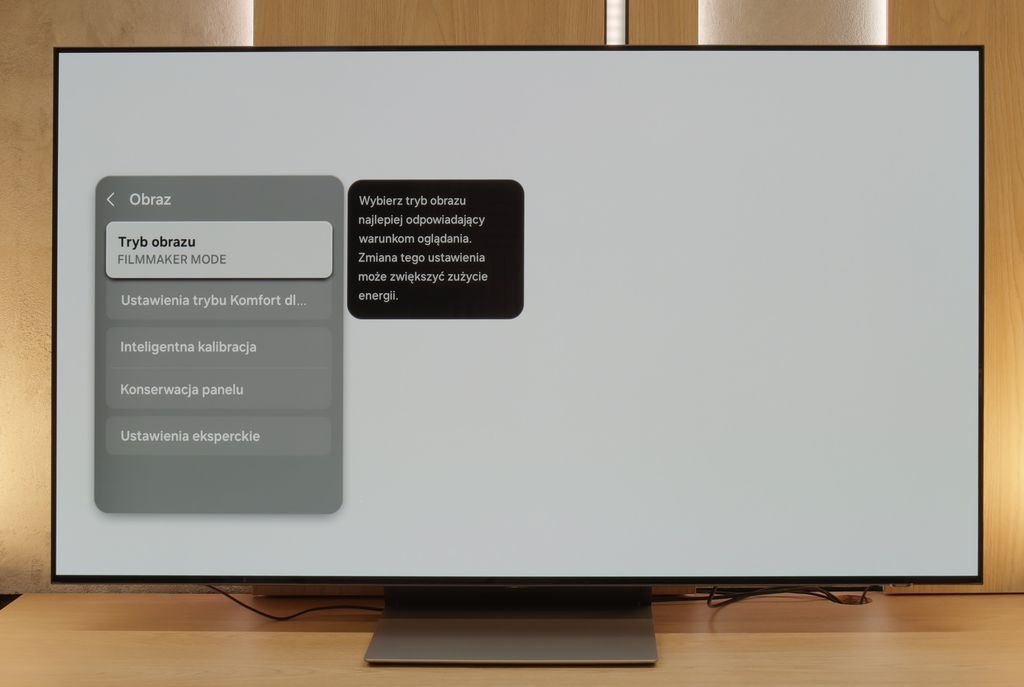
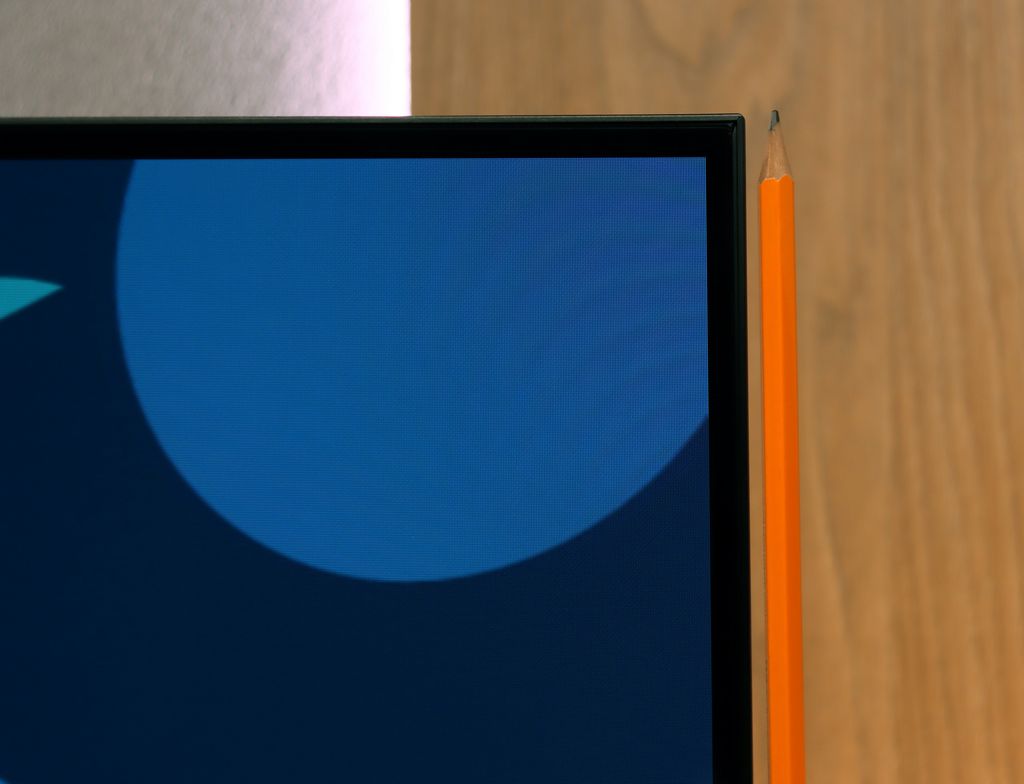
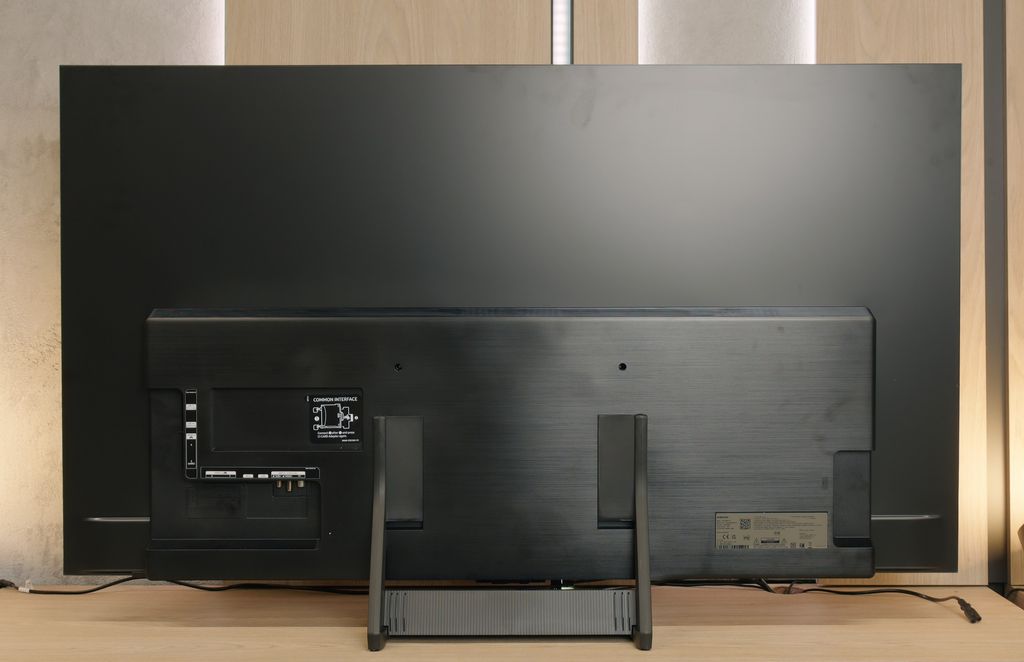
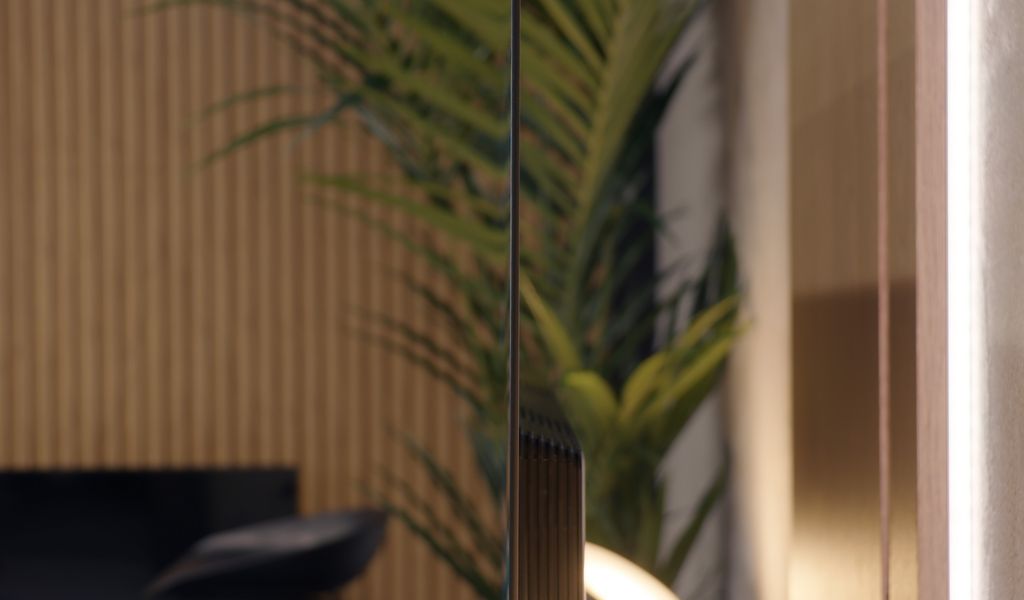
Contrast and black detail
10/10
10/10
Contrast:

Result
∞:1

Result
∞:1

Result
∞:1

Result
∞:1

Result
∞:1

Result
∞:1

Result
∞:1

Result
∞:1

Result
∞:1

Result
∞:1
Halo effect and black detail visibility:


Philips OLED 809, as the name suggests, uses an organic matrix. Like the vast majority of manufacturers, it comes from the LG Displays factory, which is not surprising, as other leading manufacturers like Sony and Panasonic also use them. The application of this type of panel allows for achieving an ideal result in the contrast and black testing procedure. Thanks to such results, the image is incredibly vivid and free of any blooming effect from bright text on a dark background, which is already an indispensable element of televisions with local dimming. This is made possible by the very construction of the panel, which is not made up of many layers of filters, but from conductive organic polymers, controlled by electrical impulses. Thus, if we want to achieve black, the pixel dims to a value of 0, rather than being obscured. The lights present in the test image are perfectly separated from each other, which is extremely difficult, and often impossible, for LCD televisions. One of the strongest advantages of Philips OLED 809 is its ability to render contrasts. The Philips OLED809 test showed that the television excels at separating bright elements, such as headlights, from dark backgrounds.
In the case of the Samsung S90F, we have an interesting situation: almost all size variants are equipped with WOLED panels, except for the 65-inch version, which has a QD-OLED panel. In this test, we analyse the version with the WOLED panel produced by LG Display, but the question remains; does this affect the quality of black levels and contrast in this part of the test? In practice – it does not. Regardless of the technology used, both panels can generate perfect black and infinite contrast. This is exactly what we expect from any top-tier television. Watching a series in the evening, in a completely dark room, is pure pleasure. The television easily separates bright elements – such as reflections or background lights – from deep, dark parts of the picture, without creating any halos or brightening effects, which top-of-the-line LCD televisions still struggle with. This is where OLED technology shows its strength – and the S90F is no exception. In terms of black levels and contrast, we cannot fault it at all.
HDR effect quality
6.8/10
7.2/10
Luminance measurements in HDR:

Result
921 nit

Result
970 nit

Result
1039 nit

Result
1022 nit

Result
425 nit

Result
1099 nit

Result
1177 nit

Result
1252 nit

Result
1183 nit

Result
577 nit
Scene from the movie “Pan” (about 2800 nits)


Scene from the movie “Billy Lynn” (about 1100 nits)


Static HDR10


Dynamic: Dolby Vision
Dynamic: HDR10+


HDR luminance chart:
SAMSUNG S90F (WOLED)
Luminancja HDR
Luminance of RGB colors
Philips OLED809/819
Luminancja HDR
Luminance of RGB colors
Philips OLED 809 delivers a more than satisfying HDR effect. The television is capable of generating brightness exceeding 900 nits in almost every scene, and sometimes even over 1000. This result allows for a full experience of content with a wide tonal range. The only moment when Philips OLED 809 is unable to generate higher brightness is in a scene from the movie “The Meg,” which features a large amount of bright white across a significant portion of the screen. However, this cannot be regarded as a poor result, as it represents a considerable improvement over its predecessor. Generally speaking, such values for OLED panels produced by LG Display, which do not feature MLA technology, are very, very good. When combined with high coverage of the DCI-P3 colour gamut, they allow for an exceptional HDR experience. The Philips OLED 809 test showed that this television supports popular HDR formats such as Dolby Vision and HDR10+.
Does the S90F handle not only black, but also bright parts of the image? Definitely yes. Tales of OLEDs as “dark screens” can slowly be regarded as a myth. The Samsung S90F, like the LG C5 based on a very similar panel, achieves brightness exceeding 1000 nits. This is a value entirely sufficient to enjoy impressive and dynamic HDR imagery – both in films and series. Most of the scenes we tested look superb, with well-defined highlights and high contrast. Of course, OLED technology still has its limitations – in very bright, full-screen sequences, such as the test pattern from the film The Meg (picture 5), the television may noticeably dim the image. However, it should be emphasized that such scenes are rare. It can be considered that the HDR effect is good enough that even mid-range OLED models like the S90F can provide a cinematic experience in the home living room.
Factory color reproduction
5.1/10
7/10


Factory Mode
After calibration


Factory Mode
After calibration
The best factory mode in which we conducted all our tests was "Filmmaker", which has become rather standard in televisions from this manufacturer. However, let's check what its characteristics were before we began the calibration process. The first aspect we will examine is white balance, as despite appearing unassuming, it determines whether the image will be free from any kind of tint. The graph clearly shows that both in SDR and HDR materials, there was a dominant presence of two colours: red and green, which resulted in a strong yellow tint that was ubiquitous across the entire image. This is perfectly visible on the "ColourChecker" palette, where all hues shifted towards their warmer counterparts. The second thing we will scrutinise is, in our opinion, the two most important graphs regarding image quality assessment: gamma and the EOTF curve. Both aim to maintain adequate brightness and contrast. The first one serves to describe the brightness level in SDR materials, while the second shows the rate of luminance increase. Analyzing the first one, we can observe that it was extremely lowered compared to the reference value marked by the orange line. This situation resulted primarily in a sharp increase in brightness and a significant reduction in contrast, almost reminiscent of that in OLED televisions. The EOTF curve exhibited greater "moderation" and only slightly brightened the entire image to 50% of the maximum brightness.
The Samsung S90F, like most modern televisions, offers many picture modes, but – in line with our testing tradition – we assessed it in the best one, which is the Filmmaker mode. This way, the image looks significantly more natural than in the default, often oversaturated settings. It was neither overly saturated nor artificially muted – just closer to what should be seen. Of course, "more correct" does not mean "ideal". Unfortunately, our S90F unit had considerable issues with white balance, especially in the blue range, resulting in a slightly yellowish filter being applied to most scenes. Someone might say it looks more "cinematic" – because it is warmer – but let's not kid ourselves, George Lucas did not film Star Wars in sepia 😉 (you will find the comparison with the scene as always below).
Additionally, in HDR materials, there was a noticeable issue with brightness management. The EOTF curve showed a clear "spike" in brightness – the television brightened the image more than it should have, which made some effects look overly intense and diverged from the reference. Fortunately, some of these problems can be eliminated through professional calibration – you will read about its effects later in the review.
Color reproduction after calibration
9/10
9.2/10

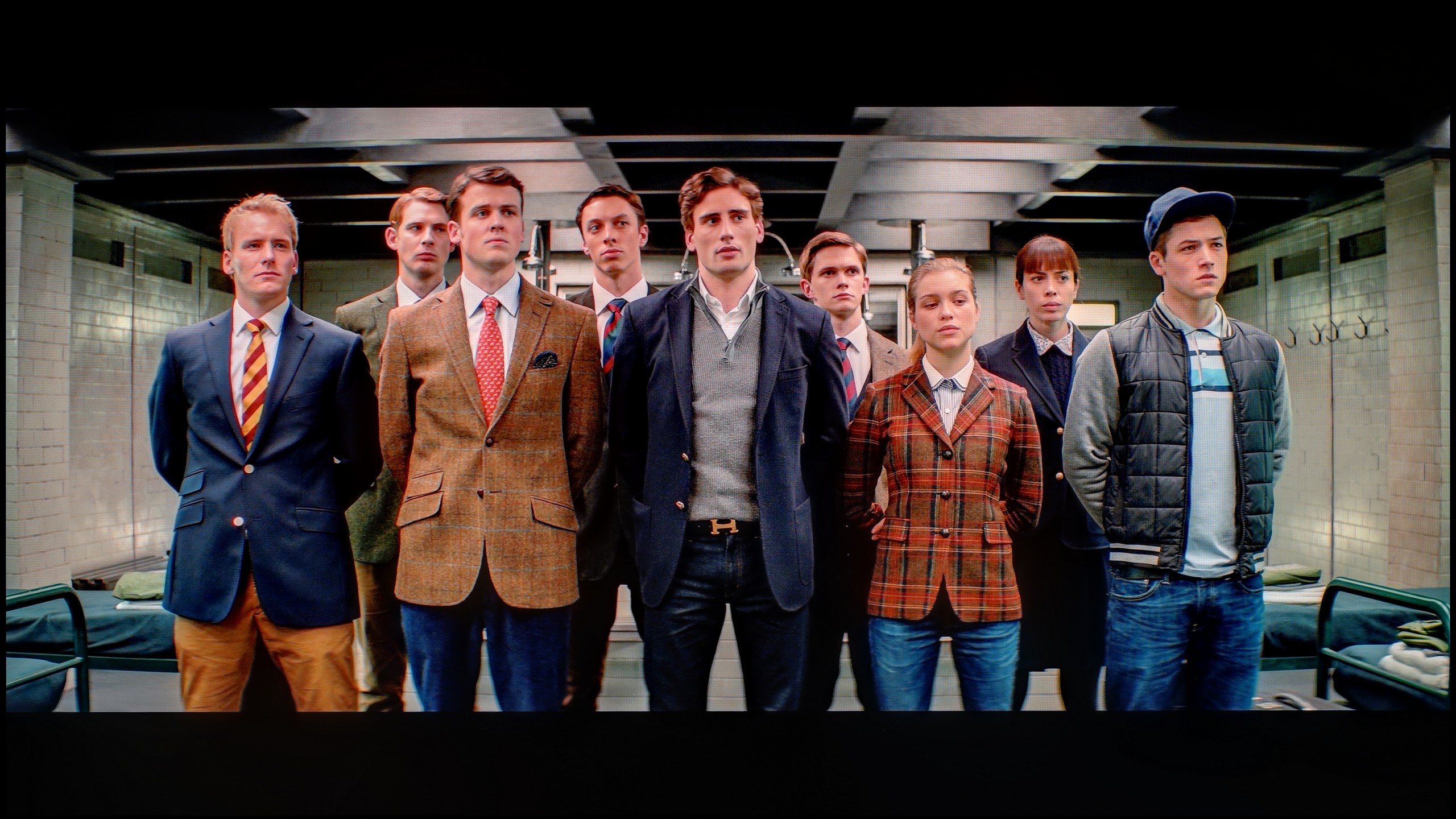


Philips, like most leading manufacturers, has been providing advanced tools for calibration processes for years. Here we will find both 2- and 20-point grey scale adjustments, as well as an advanced CMS (Colour Management System). As you can observe, this has brought about extremely beneficial results and profoundly changed the perceived image. Practically every one of the elements mentioned above has undergone a transformation and has been brought back to its natural state. This is particularly evident on the "ColourChecker" palette, where the measured samples are harmoniously in place. It must be said that the white balance has turned out exceptionally well, allowing us to enjoy a clean image free from any tint in both SDR and HDR materials. The biggest issue of OLED809, namely gamma, has been properly modelled and only shows minor errors here and there, which will not affect the overall picture. The EOTF curve, on the other hand, has been rid of that subtle brightening and now presents itself as reference-level.
After calibration, we managed to eliminate practically all the previously mentioned errors. Older films in SDR quality finally look as they should – without the sepia effect or artificial aging of the image. The atmosphere of the classics returns to its rightful place (you’re welcome, Star Wars fans), and the colours no longer resemble an Instagram filter.
One of the key changes was also the improvement of brightness characteristics in HDR content. We managed to control the EOTF curve in almost a reference manner. Yes, the most demanding users may spot minimal deviations in brightness, but honestly – most viewers won’t even notice that. And it's no wonder, because the vast majority of errors are below a ΔE value of 3, which is below the threshold of visibility. After calibration, the S90F (WOLED) truly becomes an excellent display – one that provides nearly perfect picture quality.
Smoothness of tonal transitions
2.4/10
7.3/10












Equally important as colours, blackness and contrast in the context of the image quality assessment process is its purity. This category can also include the quality of tonal transitions. How many of you have experienced the effect of "banding" of colours on your older receivers? It is extremely bothersome and often effectively hinders immersion in the series or film being watched. Philips OLED 809 unfortunately has one of those qualities that are better left unspoken. However, out of editorial duty, we should take a look at them and evaluate, which will be quite simple given their lack of complexity. As you can see, practically every scene demonstrated a lack of fluidity between colours. And just as in the film "Kingsman" this is still acceptable, in other productions it is really impossible to leave them with a clean conscience, especially when looking at "The Green Knight." There, the dense fog has practically been converted into horizontal stripes and vaguely defined geometric shapes. There are televisions that can manage tonal transitions perfectly, but Philips OLED 809 unfortunately does not belong to this group. During the tests, we could observe the colour banding effect, particularly in demanding scenes, which negatively impacts the reception of the film. Philips OLED 809 test indicates that even options for removing posterization do not help sufficiently, which can be considered a serious flaw.
And here we must honestly admit – the S90F has somewhat let us down. Compared to last year's S90D model with a WOLED panel (very similar to the one used this year), this year's Samsung has performed worse. This is not only in comparison to its main competitor, the LG C5, but even when put alongside its older sibling. The biggest problems arise in dark scenes, where difficulties with smoothly blending colours are evident – the screen slightly stepped the tonal transitions, causing some parts to lose their naturalness. We don’t know exactly what went wrong – perhaps it’s a matter of software or a different processing algorithm. It's a pity, as we were hoping that the level from last year would be at least maintained. Unfortunately, it is a step backwards.
Image scaling and smoothness of tonal transitions
5.5/10
7.5/10
Smooth transition function

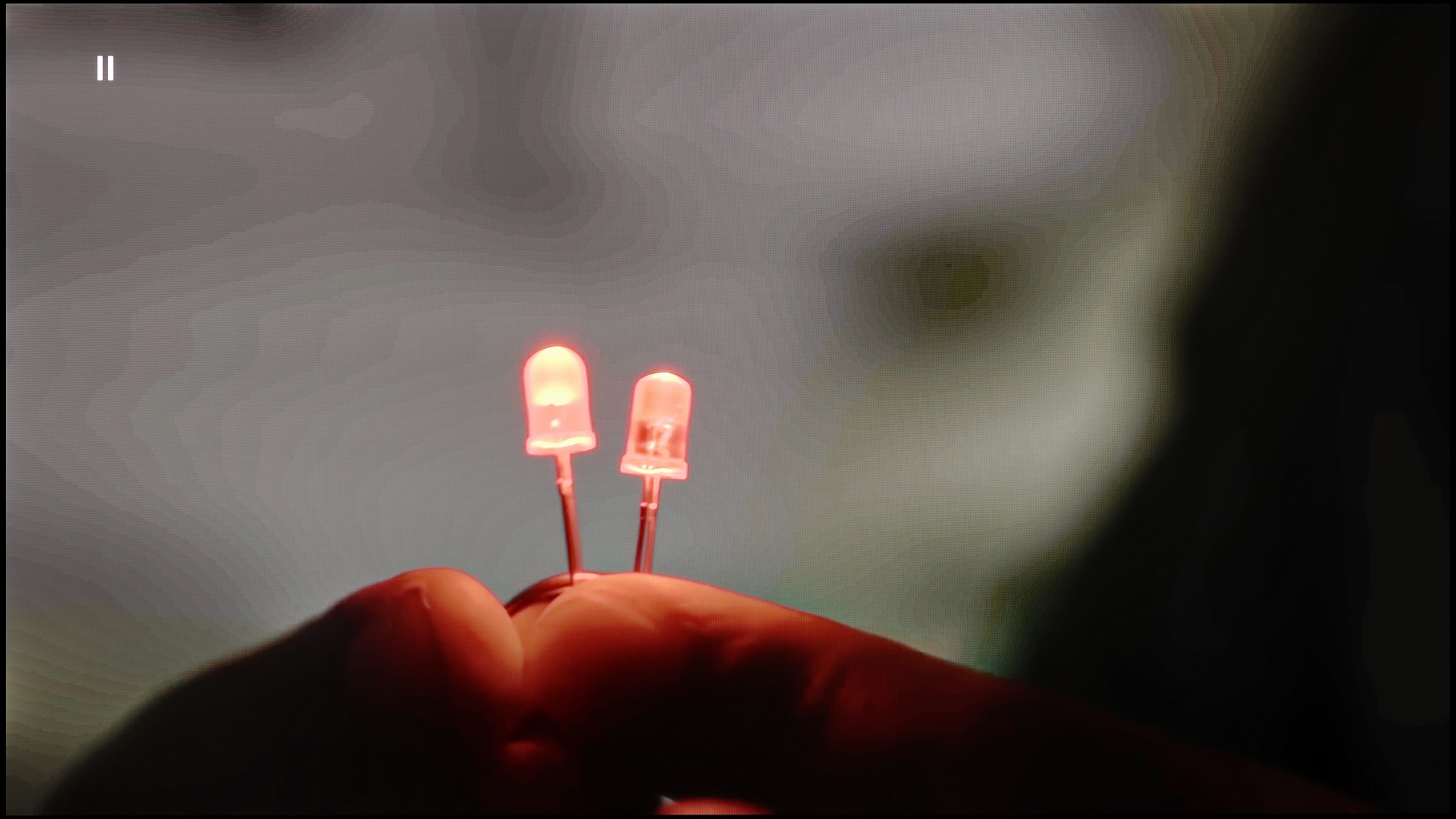
Image without overscan on the SD signal


Philips OLED 809 did not perform particularly well in the test of tonal transition fluidity. Moving on to the part of the test where we assess the behaviour of the television's algorithms, we will once again check the function responsible for removing posterization. Indeed, such a function exists in the menu and has several available options. As you can see in the picture on the left, although its presence has been confirmed by us, it is not useful. Only at the highest setting does it effectively remove stuttering; however, it blurs the entire image in the process. Therefore, it is completely useless.
It happens more than once or twice that you and we watch lower quality materials. In this case, the quality of the image upscaling algorithms can have a beneficial effect. We must admit that those implemented in OLED 809 work quite efficiently and improve image quality without visible artifacts. You can only notice slight edge fringing; however, it is unlikely to be visible during normal viewing.
Digital Image Processing in the S90F:
Fortunately, Samsung, as in most of its models, effectively manages the unwanted posterisation effect in the S90F. The feature responsible for this aspect is noise reduction, which does a decent job of smoothing tonal transitions and eliminating unnatural colour connections – of course, within its limitations. Unfortunately, it operates rather aggressively, so using it comes with compromises. In addition to improving gradation, it can also remove film grain or gently soften facial features. In this case, the choice is yours – do you prefer a more "clean" image, or do you want to preserve the original texture of the material?
Image Scaling in the S90F:
In this year's model, Samsung implemented its own AI processor – NQ4 Gen3, which does quite well with upscaling. In our test scenes, the television effectively "pulled up" lower quality towards artificial 4K – the image was more pleasant to view, and the differences in sharpness between native and scaled content were minimal. Unfortunately, behind all this AI marketing facade lies a certain shortcoming. The S90F struggles with overscan. If you reach for truly archival materials – e.g. a VHS tape of your parents' wedding – you must expect that the lower part of the image may be cut off. The image adaptation function to resolution simply does not work here as it should.
Blur and motion smoothness
8.5/10
8.5/10

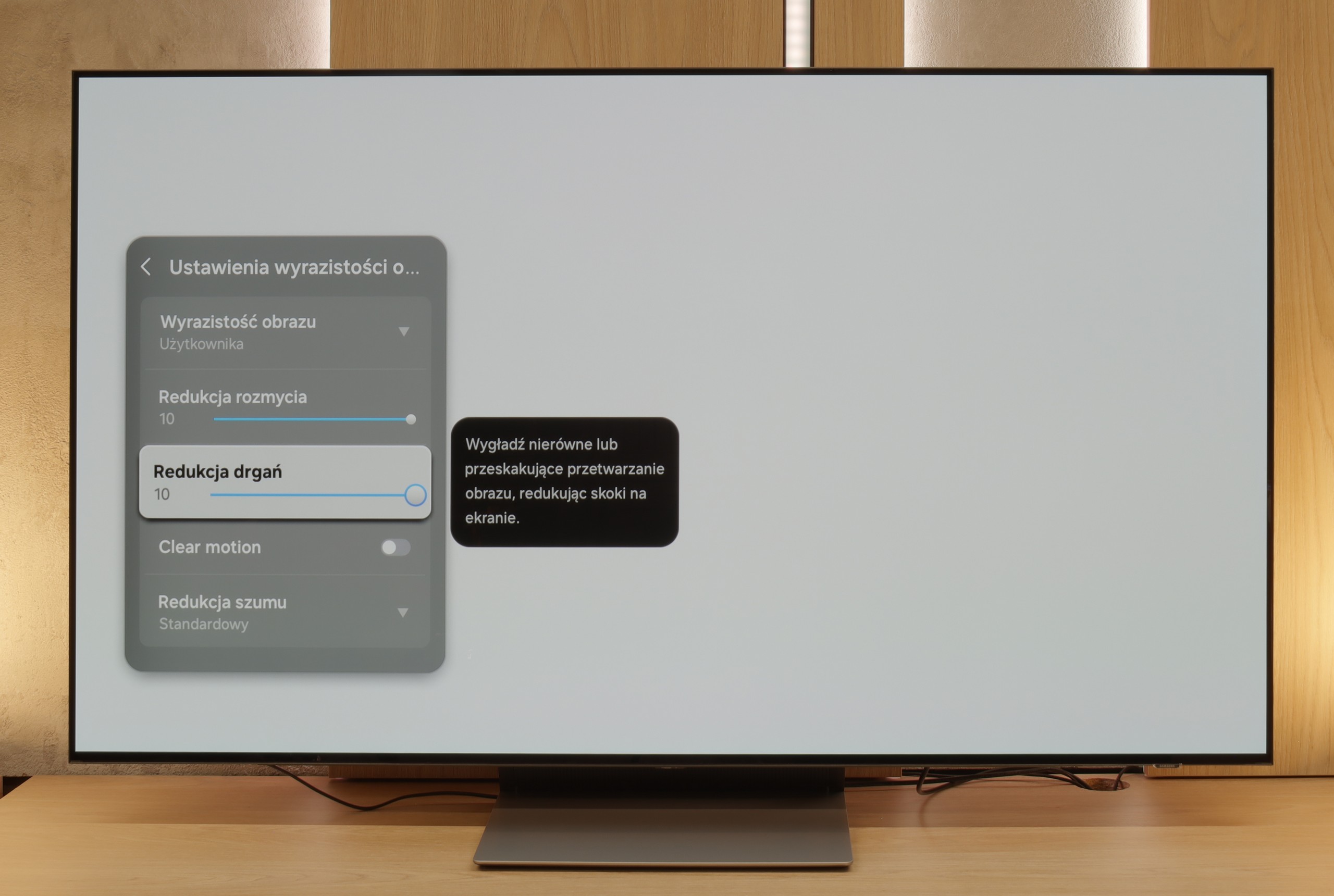
Blur (native resolution, maximum refresh rate):






The maximum refresh rate we can set on the tested television is 144 Hz. This value can be achieved by connecting it to a really powerful PC. In the case of consoles or television, everything remains the same. For those who require high smoothness of motion or dislike the characteristic stuttering of films recorded at 24 fps, the manufacturer has prepared a fairly extensive motion smoothing system. In the dedicated tab, we will find a slider for “Smoothness” that is responsible for eliminating stutter, and “Motion Blur Reduction,” which helps increase the sharpness of dynamic elements. The function works very well and granularly, meaning that each setting has a real impact on the perception of motion. We also mention that it works at a refresh rate of 120 Hz, as it operates on multiples of film or television materials. With such an extensive set of options, every user will find their golden mean. In the picture, we present our choice, which is slight smoothing without the soap opera effect.
Motion is influenced not only by settings on the television but also by the response time of the panel itself. OLED televisions feature the best response time on the market, which in the case of 809 is about 0.1 ms. There are no IPS/ADS or especially VA panels that come close to the results of organic panels.
The S90F really handles motion excellently – after all, it’s an OLED with a 144 Hz panel, so sports and games look absolutely stunning on it. The image is fluid, clear, and there’s no room for any ghosting or blurring that sometimes plagues cheaper LCDs.
The television is also equipped with motion smoothness settings, allowing you to customise everything to your preference. We have motion blur reduction and judder reduction – you can set it so that the image is super smooth (even to that soap opera effect), or more cinematic, with the classic 24-frame 'choppiness'. The choice is yours; Samsung doesn’t impose anything.
Console compatibility and gaming features
10/10
9.5/10
- ALLM
- VRR
- VRR range40 - 144Hz48 - 144Hz
- Dolby Vision Game Mode
- Correct implementation of HGIG
- 1080p@120Hz
- 1440p@120Hz
- 4K@120Hz
- Game bar

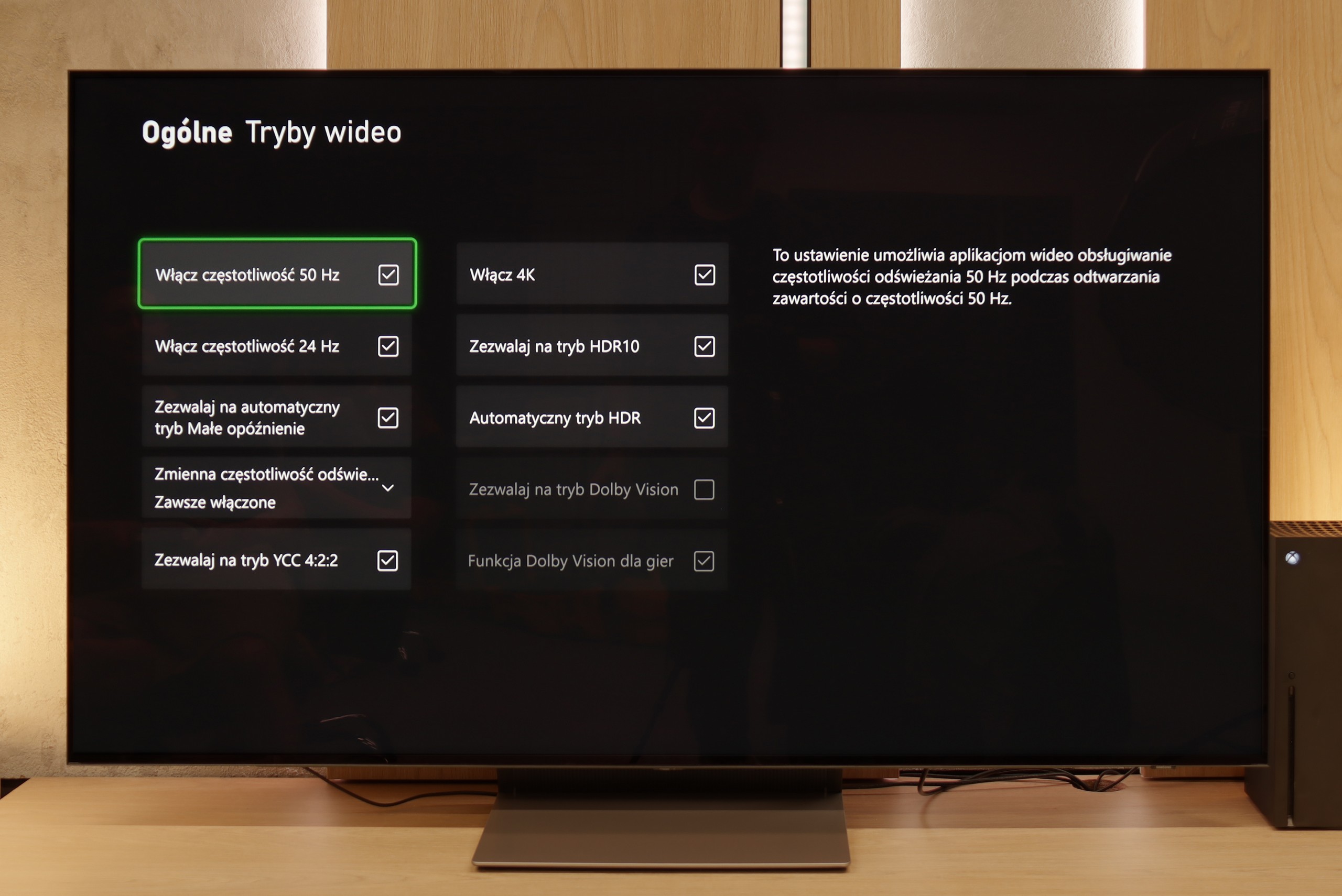

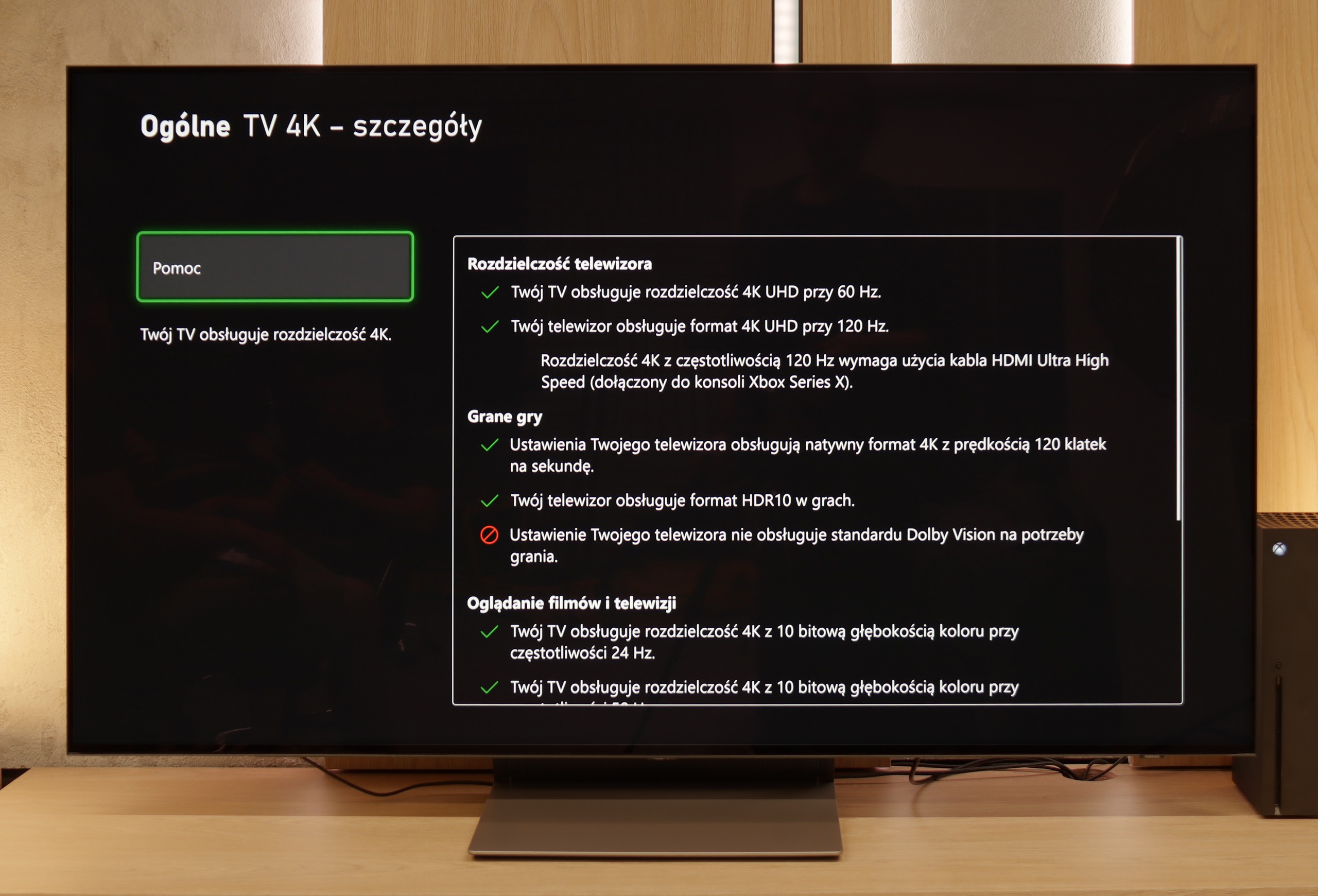

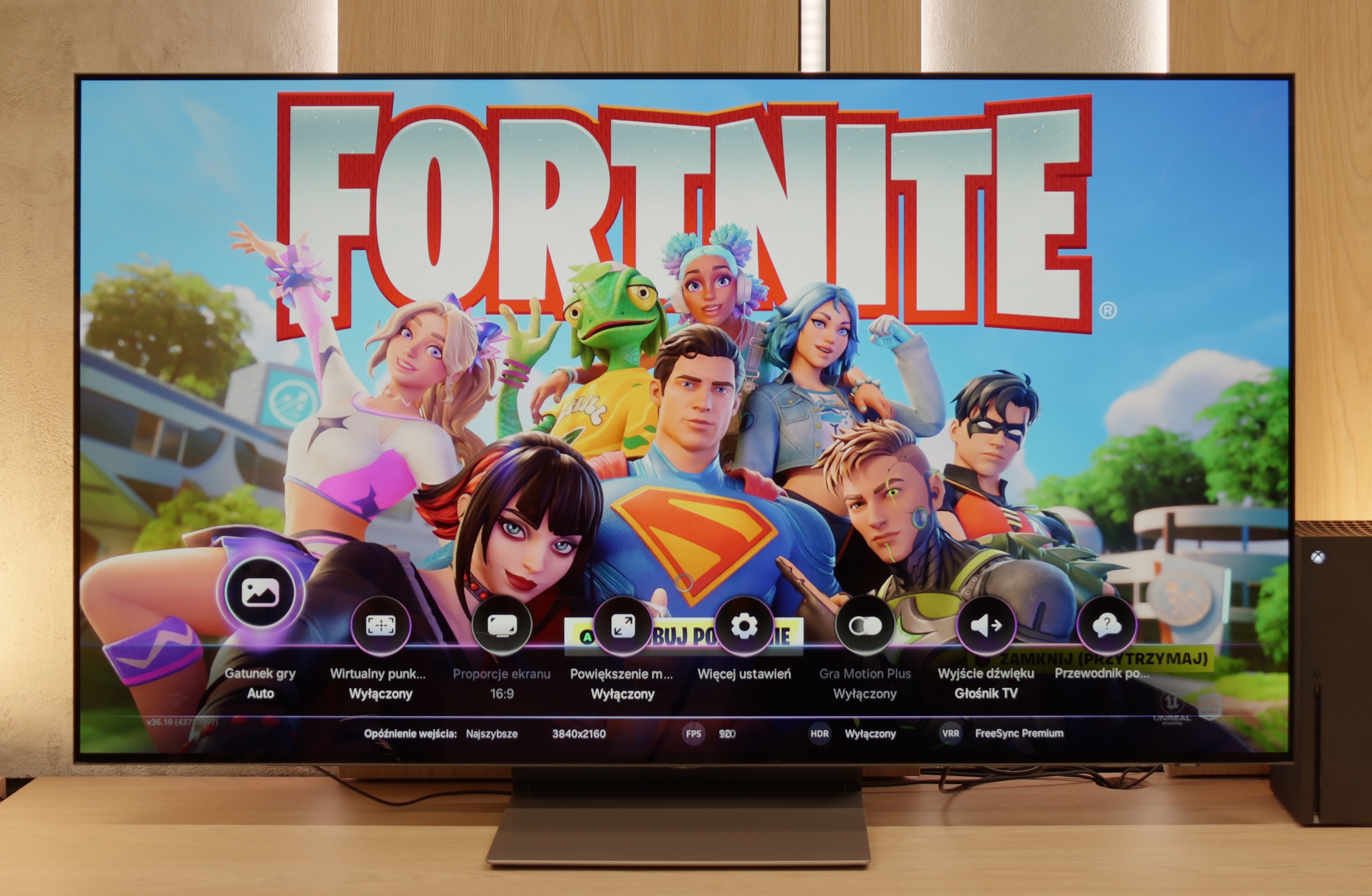


The Philips OLED 809 television supports all technologies included in the HDMI 2.1 standard, and during our testing, each one activated without any problems. Therefore, we must state that this television is perfectly suited for all gamers, whether they are using a console or a computer. It is worth mentioning that the manufacturer has opted to implement the HGIG mode, which provides a great alternative to Dolby Vision, which unfortunately in the OLED809 is unplayable due to very high input lag.
A nod to gamers is also the inclusion of a dedicated GameBar, which allows for monitoring current gameplay parameters and quick changes to settings. We will also find a function to enable a crosshair, which will be very useful when shooting with a sniper rifle, but from the so-called hip. Additionally, we can also find a shadow enhancement function for better visibility in shadows and a colour filter for gamers with visual impairments.
In summary, the OLED 809 is a very good and versatile device for gamers. Anyone who purchases this television for gaming does not need to worry about anything, as it is simply made for gaming. Especially since features such as VRR, ALLM, G-Sync, FreeSync, or HDR Dolby Vision gameplay will allow for an even greater immersion in their favourite title. Lastly, we will add that the only downside of the television in game mode is the artificial image sharpening, regardless of the settings, and it cannot be 'softened'.
When it comes to gaming features – the S90F has absolutely nothing to fault. Aside from the lack of Dolby Vision, which is already the norm for Samsung. The television operates at 144 Hz, has four HDMI 2.1 ports, so you can easily connect more than one console or PC. Onboard, we also find the Game Bar – a practical tool that allows you to quickly glance at picture settings, VRR status, ALLM mode, and other useful options. Game Motion Plus also deserves a mention – Samsung's proprietary motion enhancer that is the only one truly functioning sensibly in games. The image appears smoother, but without any artificial effects or slowdowns.
It is also worth mentioning the HGiG feature, which – much to our slight surprise – works correctly. We're mentioning this because Samsung clearly broke something in one of the last updates, and in some models, the option responsible for HGiG simply... disappears from the menu. Setting it up becomes practically impossible. Fortunately, our S90F unit did not have this issue, but the situation is dynamic, so it's worth keeping this in mind and regularly checking for updates and information from the manufacturer.
Input lag
9.5/10
10/10
SDR
HDR
Dolby Vision
The results of input lag measurements in the Philips OLED 809 are at a high level, regardless of the signal or resolution. All gamers will certainly appreciate the manufacturer's efforts, which mean that a game running at 4K120Hz with HDR has only 5 ms of lag, which is practically unnoticeable even in online games. One should not forget the proper implementation of the gaming mode with Dolby Vision, which deserves praise for a similar reaction time of 13 ms. In this case, the Philips OLED 809 receives our highest rating.
The input lag on the S90F is at a level akin to that of a monitor. In optimal conditions, a result of 5 ms was achieved, which is an absolutely stunning outcome – even a benchmark for the most demanding players. Whether you are playing fast-paced shooters, fighting games, or simply value instant response – the S90F does not disappoint in this regard at all.
Compatibility with PC
6.4/10
8.6/10

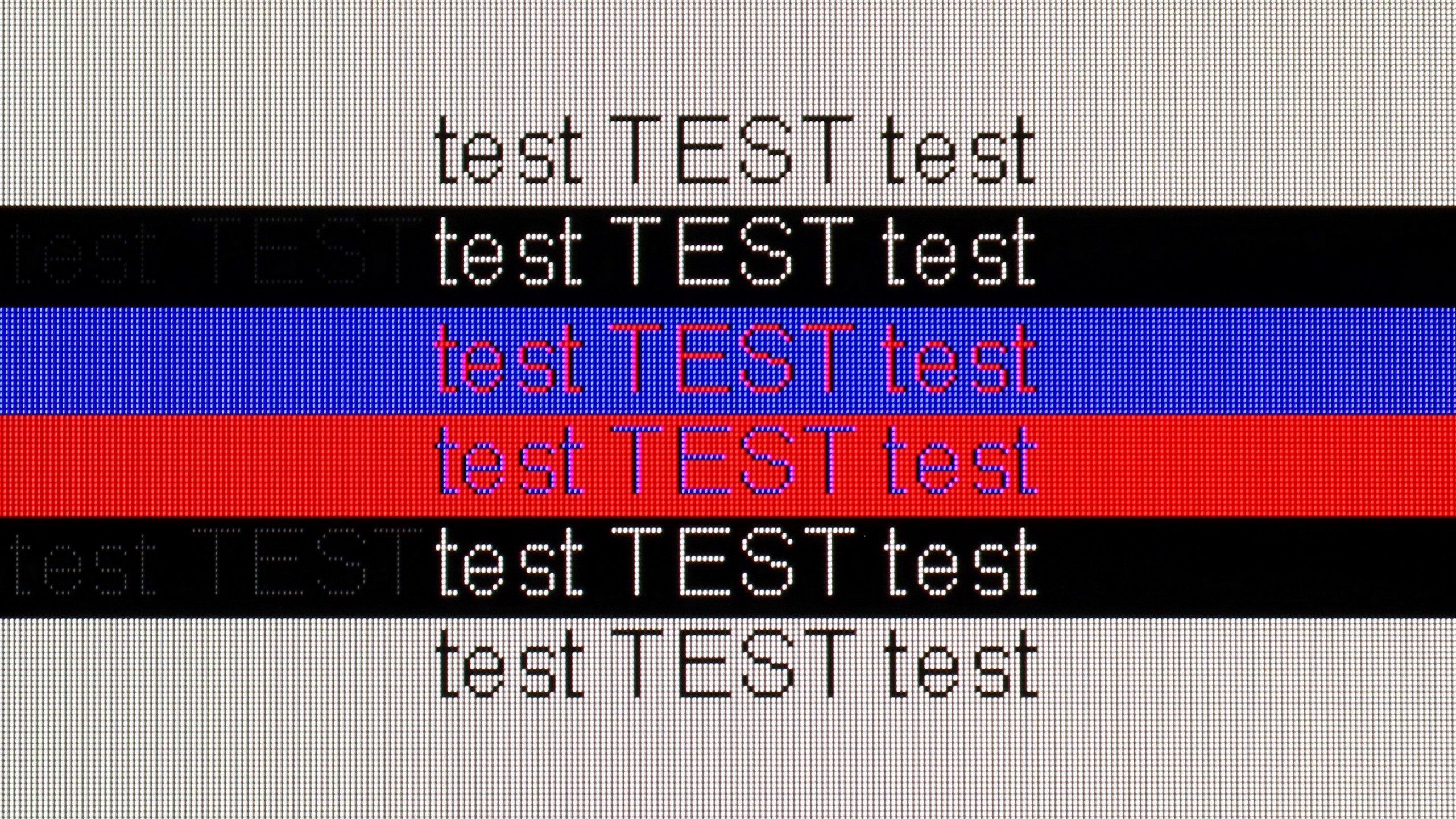
Just like in games, the tested television performs excellently, but in everyday work with text, it doesn't do so well. Although its latency is very low, the problem lies elsewhere. The television does not support chroma 4:4:4, which results in unpleasant font blurring, regardless of the provided refresh rate. While this is not usually a problem in games, it can be quite bothersome during text work due to poor readability. Additionally, the pixel arrangement in WOLED panels does not make things easier for it.
The S90F is a great tool for both gaming on PC and everyday work. Gamers can rest assured – the television effortlessly supports image synchronisation with NVIDIA graphics cards thanks to G-Sync, and the 144 Hz refresh rate combined with very low input lag only confirms this. The S90F will also serve well as a monitor for text work. Of course, the readability of fonts may be slightly compromised by the characteristic pixel structure in the RWGB layout, but this is a topic well known mainly to those who work with large amounts of text, code, or spreadsheets in Excel. For most users, this will be perfectly acceptable.
Viewing angles
7.4/10
7.4/10
A widely known advantage of OLED matrices is their performance when viewed even at sharp angles. We do not experience a drop in contrast or colour saturation. However, a characteristic feature of panels produced by LG Display, which are not used in top models, is a tint in shades of sea or cyan when viewed at large angles.
The viewing angles on the S90F are very good, although it must be admitted that they are slightly inferior to the 65" version with a QD-OLED panel. Nevertheless, the picture quality at wide angles is excellent – colours remain vivid, and brightness does not drop drastically when viewed from the side. There is no need to move the television towards you to see a clear image. For most users, this level is more than sufficient.
TV efficiency during daytime
5.5/10
6.1/10

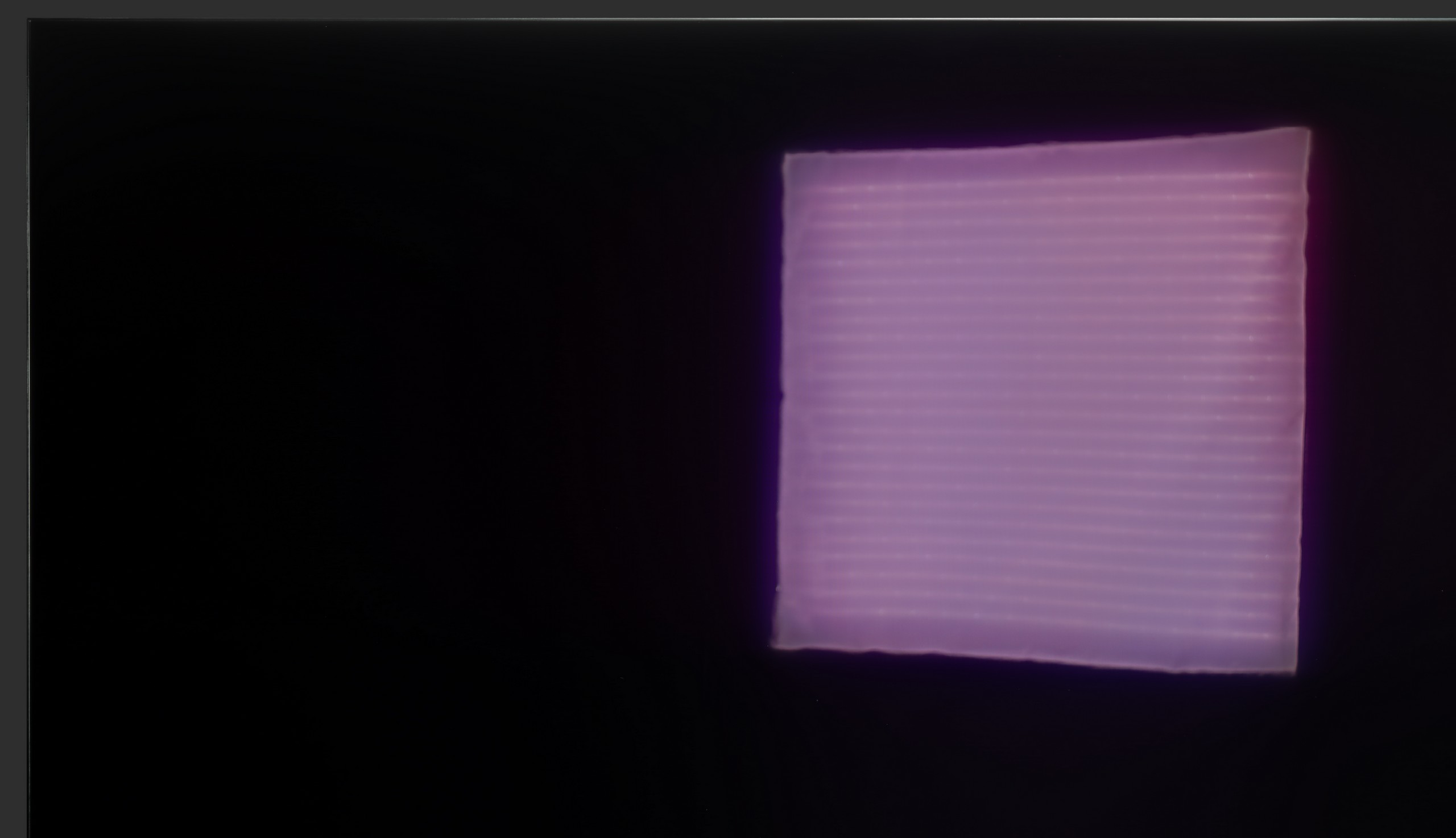

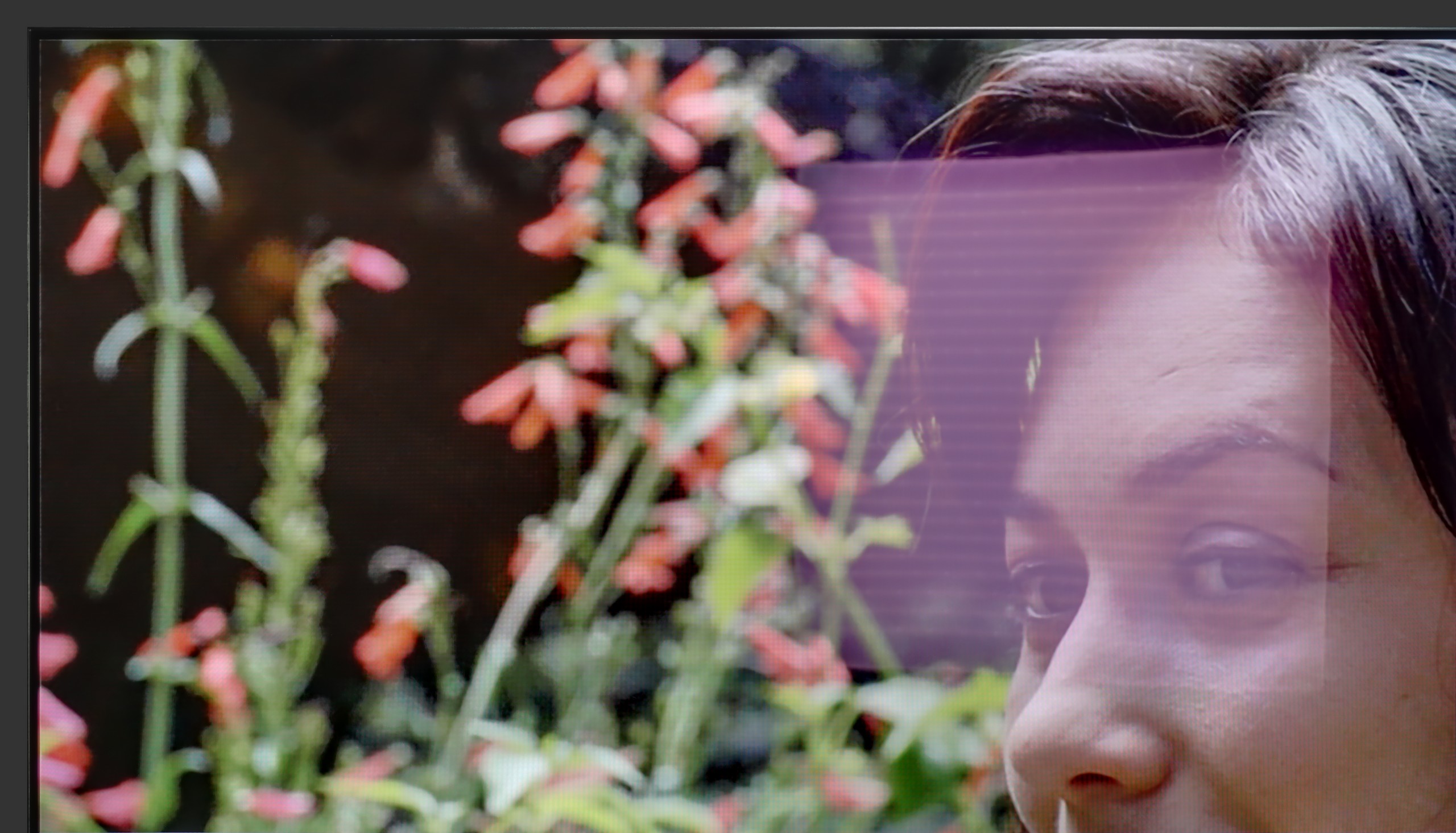
Matrix brightness
Average luminance SDR
SAMSUNG S90F (WOLED): 405 cd/m2
Philips OLED809/819: 322 cd/m2
For many years, the issue raised regarding OLED televisions has been their performance during the day. Many people still believe that these are not receivers intended for such use. They are probably right, except when it comes to screens from a few good years back. Technology advances, and currently there are no objections to recommending such a television for today. Admittedly, a glossy panel does not sound like something that would substantiate this claim; however, it is hard to stand against the images that you can see for yourselves. Another point we indicate to pay attention to is contrast during daytime use. This, unlike QD-OLED panels, and even OLEDs equipped with MLA technology, is higher. The reason for this situation is the lack of excited quantum dots and micro-lenses.
S90F is really a bright television for an OLED. Of course, it is not worth comparing it to Mini-LED televisions or the brightest high-end OLEDs, but under normal lighting conditions, it is quite easy to watch something during the day. The brightness is high enough that you don't need to cover the windows every time you turn on a film or series. However, it is important to remember that the anti-reflective coating on WOLED panels is not among the best. Reflections can be visible, especially with bright light coming in from the window. In such a case, it's best to reach for curtains.
Details about the matrix
Subpixel Structure:

Panel uniformity:
TV features
7.8/10
7.5/10
- HDMI inputs2 x HDMI 2.0, 2 x HDMI 2.1 48Gbps0 x HDMI 2.0, 4 x HDMI 2.1 48Gbps
- Other inputsToslink (Optical audio), IR (remote)
- OutputsToslink (Optical audio), eARC (HDMI), ARC (HDMI)Toslink (Optical audio), eARC (HDMI), ARC (HDMI)
- Network InterfacesWi-Fi 2.4GHz, Wi-Fi 5GHz, Ethernet (LAN) 100MbpsWi-Fi 2.4GHz, Wi-Fi 5GHz, Ethernet (LAN) 100Mbps
- TV receptionDVB-T, DVB-T2, DVB-S, DVB-S2, DVB-CDVB-T, DVB-T2, DVB-S, DVB-S2, DVB-C
Classic features:
- Recording to USB (terrestrial TV)
- Recording programming
- Picture in Picture (PiP)
- RF remote control (no need to aim at the screen)
- Backlit remote control
- Teletext
- Audio only mode
- Possibility to connect Bluetooth headphones to the TV
- Possibility to simultaneously use Bluetooth headphones and the TV speaker
Smart features:
- AirPlay
- Screen mirroring (Windows Miracast)
- Wyszukiwanie głosowe
- Voice search in native language
- Ability to connect a keyboard and mouse





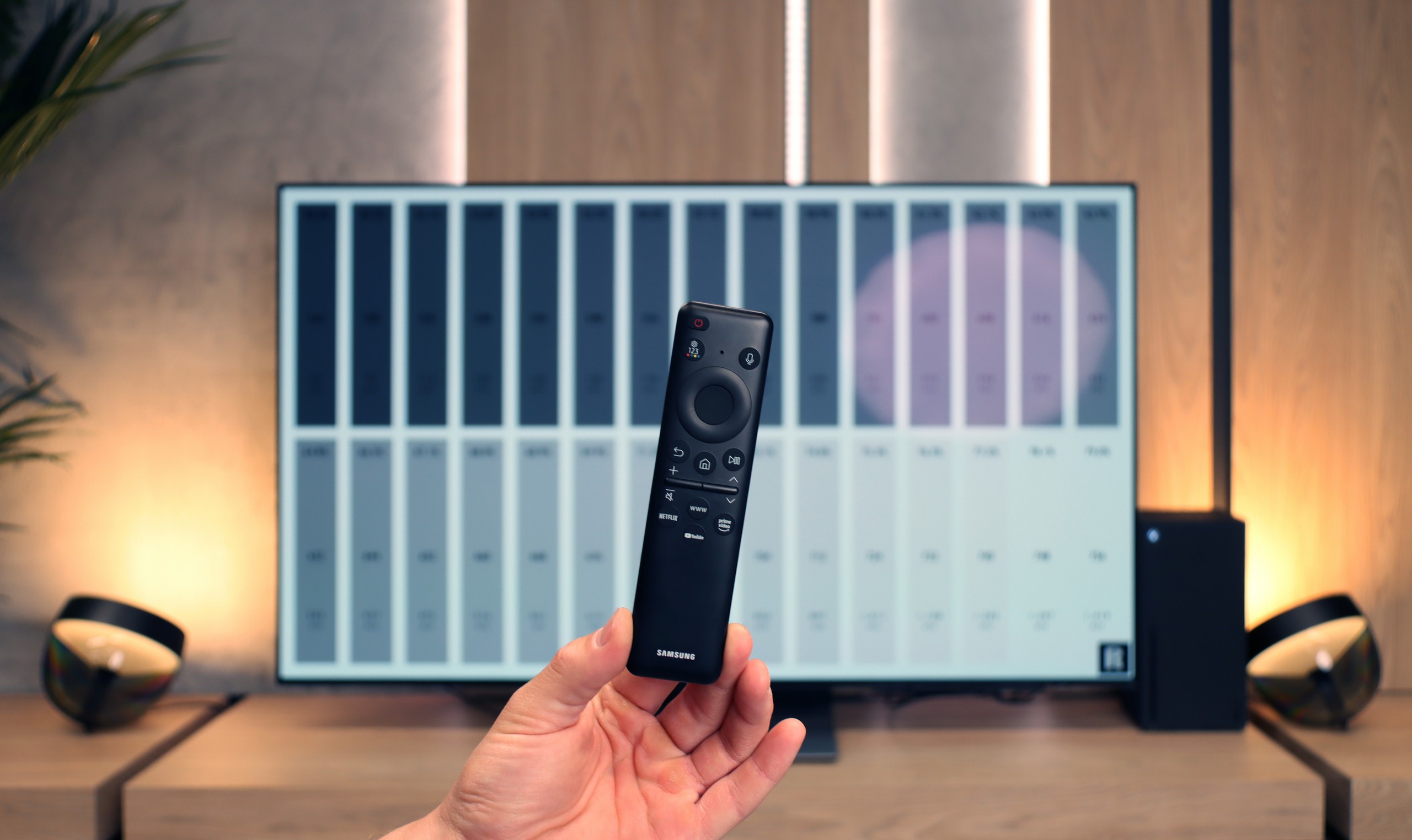
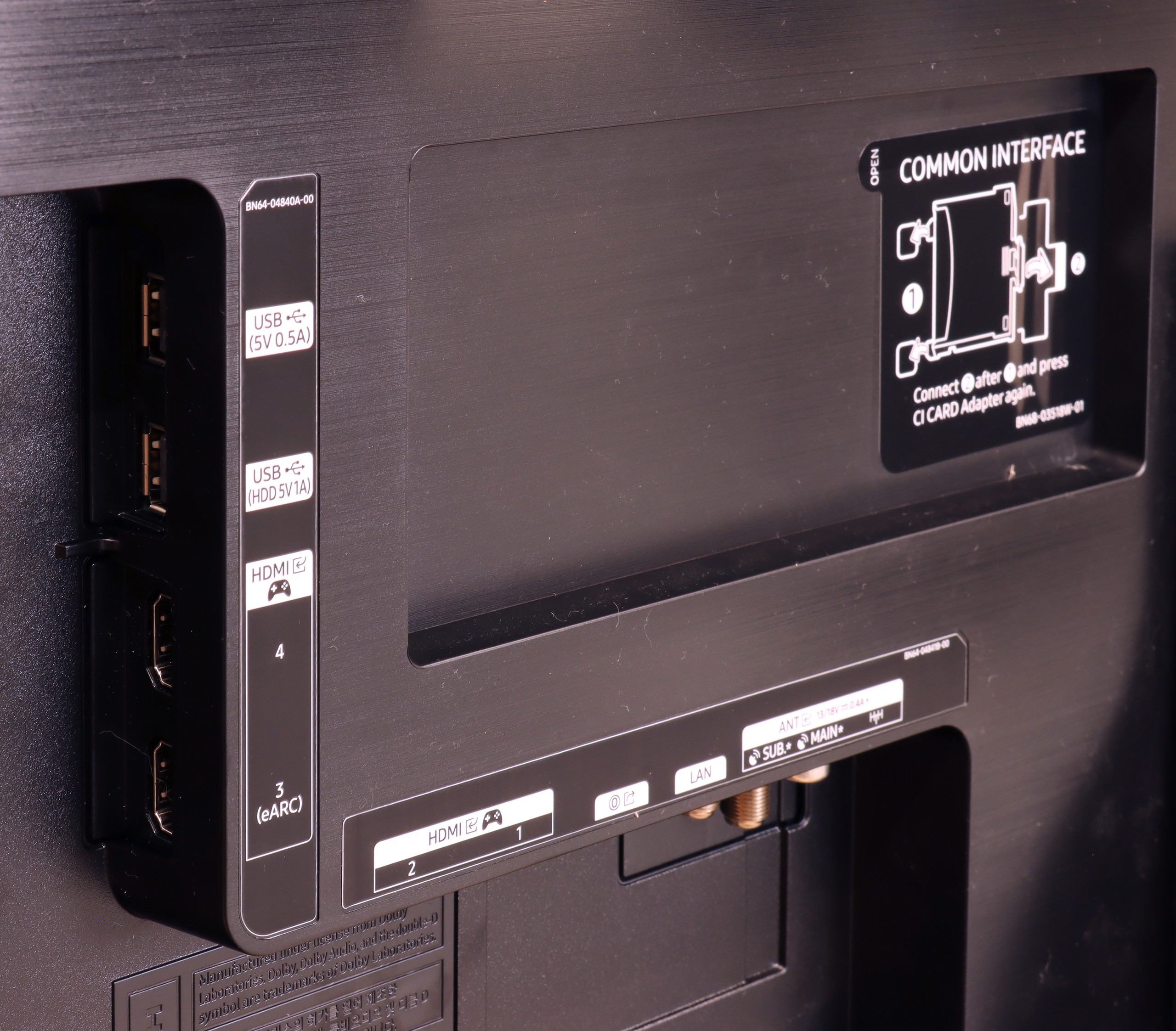
Before we move on to the software that controls the television, it is impossible not to mention the manufacturer's biggest differentiator. We are, of course, talking about the multicoloured Ambilight backlighting, which placed on the back of the device displays colours adjusted to what is happening on the screen, often allowing for an even greater immersion experience. The Philips OLED 809 is powered by the Google TV system. This is an undeniable advantage compared to some other models from the manufacturer that use the proprietary TitanOS system, which is significantly more closed and limited in terms of available applications. With Google TV, we can install almost any application, both from the store and directly from online repositories via an APK file.
The Google TV system also offers many conveniences related to control. We can easily connect a keyboard with a touchpad, which significantly facilitates typing queries and navigation. Additionally, thanks to integration with Google, we can issue voice commands using the remote, which are quickly and accurately interpreted by the system.
In summary: Google TV is currently one of the most popular systems on the market. Thanks to the use of a powerful CPU, it operates very smoothly and stably, without freezing or experiencing lags during tests. It is definitely the best option for those who want to make the most of their television's capabilities and appreciate the openness and versatility of the system.
The Samsung S90F is equipped with many classic television features, such as EPG, CI module, and headphone support, but there's also more to it. Thanks to the presence of several tuners, the television offers a picture-in-picture (PiP) function – very useful, for example, when we are watching one match but want to take a glance at the score of another one happening simultaneously. It's a shame that Samsung has completely eliminated the USB recording function for some time now, but this is partly compensated by good integration with set-top boxes and other devices. The remote control – although small and lacking a numeric keypad – allows for the control of many devices connected to the television. We can easily operate a set-top box, amplifier, console, or other equipment with it – and all without the need to reach for multiple remotes.
As for the Smart TV system – Tizen on the S90F operates very smoothly, which is not always the case with cheaper models featuring this system. The system itself is comprehensive and offers a lot of functions – we have screen mirroring, AirPlay, Bluetooth device support, as well as many options related to smart home integration, such as controlling light bulbs or other smart devices directly from the television. However, it is important to remember that Tizen is a closed system, so when it comes to apps – we are limited to what we find in the Samsung store. And while this is quite extensive, it does not match the flexibility of the Google TV platform. It's worth keeping this in mind if you have specific needs for niche applications.
Playing files from USB
9.5/10
7.5/10
Supported photo formats:
Maximum photo resolution:

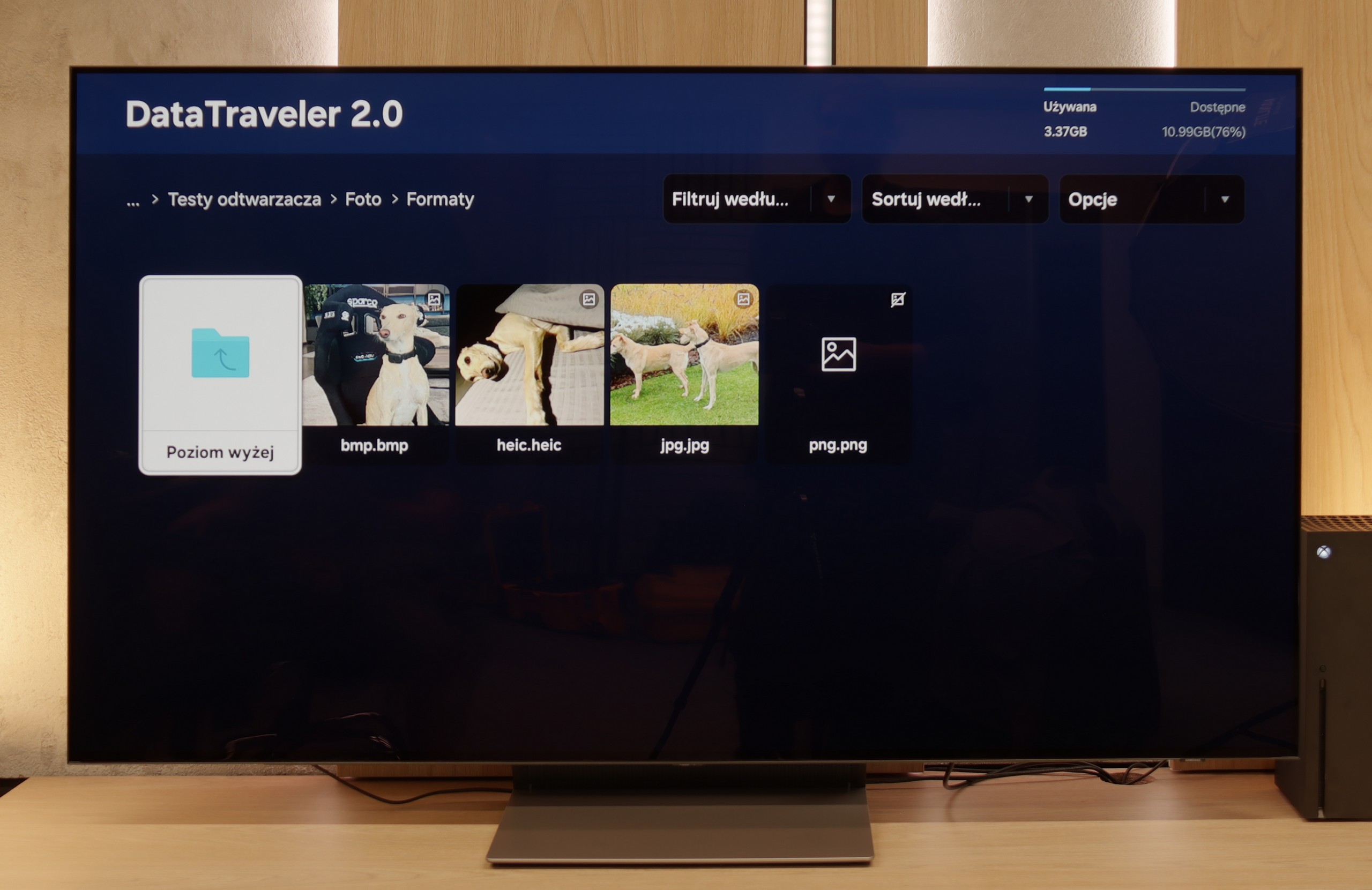
The default media player in Philips OLED 809 is of a fairly high standard, although it is not without its flaws. It performs excellently in playing various types of video files, except for two less popular ones. The presence of all checkboxes confirming playback of different subtitle formats deserves a big plus. The television handles every resolution of images, making it an excellent screen for viewing family albums or studio photos. The rest, including supported photo and audio formats, is satisfactory, and those that the television cannot play are either uncommon or becoming obsolete. Anyway, this is not a problem, as we can download a program from the app store that will resolve these issues.
The built-in media player in the S90F is adequate and supports a fair number of popular formats. Unfortunately, during testing – once again – we encountered issues, despite the manufacturer's claims. The television did not play some formats that are supposedly supported, such as HEIC format photos (the Apple version), or SRT and SUB subtitles. In everyday use for most people, such a player is sufficient to play a movie from a USB drive, but it's worth keeping in mind that surprises may occur. Perhaps the situation will improve in future updates, but at the time of writing this review – it works as it works.
Apps
9.6/10
8.7/10














































Sound
7.1/10
7.4/10
- Subjective sound quality:7.1/107.4/10
- Dolby Digital Plus 7.1:
- Dolby True HD 7.1:
- Dolby Atmos in Dolby Digital Plus (JOC):
- Dolby Atmos in Dolby True HD:
- DTS:X in DTS-HD MA:
- DTS-HD Master Audio:
At the outset of this paragraph, it should be noted that sound quality is always subjective. In our opinion, the audio system that the manufacturer has equipped the Philips OLED 809 with is of a fairly high standard. The bass is well-defined, but at the same time, it does not overshadow the mid and high tones. Looking at it from another angle, when opting for a television at this price point, we will likely already have a separate audio system. In this context, the tested television will certainly not disappoint, as it supports virtually every important standard, including Dolby Atmos and, more importantly, DTS-HD Master Audio.
The S90F plays really quite pleasantly, with noticeable bass and quite good dynamics. A definite plus is the support for Dolby Atmos, which allows the television to deliver a slightly more "spatial" sound – of course, to the extent allowed by the built-in 2.1 system 😉. Unfortunately, as is often the case with Samsung, there is a lack of support for the DTS:X format. So, if you want to take advantage of its capabilities, you need to connect the audio equipment directly to the receiver, rather than to the television itself – otherwise, it simply won't work.


